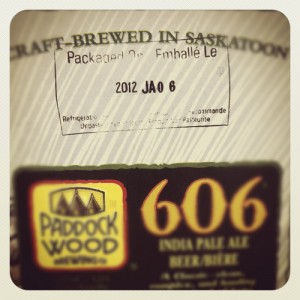My column in the current issue of Planet S Magazine revisits a longstanding beef of mine – date codes. I have never understood why breweries feel the need to mask the production/best before date in a jumble of letters and numbers. Telling the consumer how old their beer is seems like basic common courtesy to me. But, no, when it comes to the major breweries you need a graduate degree in linguistics to figure it out.
The column itself (which you can read here) is a slightly reworked version of a Beer 101 column I did a couple years ago (and wrote a post about here), so I won’t go into the details of what specific codes might mean. But the basics are that most of the corporate brewers disguise their production/packaged/best before date in some kind of bizarre code that only they and the most enterprising of consumers can decipher. Craft brewers tend to be much better, most stamping a straightforward date on the box/bottle. In general most craft brewers tend to be more committed to transparency with their customers and they risk losing a lot more if someone drinks their beer past their prime – they may never return.
Rather than go into specific codes, I want to use this as an opportunity to renew my call for some kind of regulation on date codes. Clearly the big brewers aren’t going to do anything voluntarily, so maybe we need to force them. We regulate all sorts of things around beer, including labeling requirements. So how hard would it be to add a requirement of a clearly indicated date on the packaging? This is exactly what the European Union requires of beer produced in its jurisdiction. All beer must have a best-before date clearly marked (although it can get a bit silly when dealing with a Lambic or a Belgian Quadrupel).
Not only is a best before date mandatory, the EU even regulates how the date should be printed: “This must consist of day, month, and year—in that order—and be preceded by the words “best before,” “best before end,” or “use by” for highly perishable goods.”
Maybe to some North American minds this is an example of big government micro-managing brewery operations, but I contend it is basic consumer protection. We have a right to know how old our beer is, and in a way that is easy to determine. And as regulations go, this one would be pretty easy to comply with.
My one critique of the EU regulation is that they require the date to be a “best before” date, which certainly makes sense for perishable goods like milk. Beer is different and I think a “produced on” or “packaged on” date would make more sense. If that pale lager is six months old, I know not to expect much from it. However, if I am looking at a bottle of barley wine or Russian Imperial Stout, I know it will just be starting to stretch its legs a bit.
Either way, the goal should be clarity and simplicity. Give me a date and let me choose whether I should still buy the beer or not.



Leave a Reply